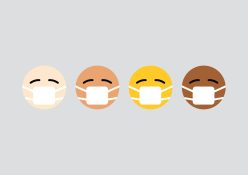Can you imagine a life without chocolate, sweets or cooldrinks? If you’re diabetic, you might have to. Daniel Sher takes you through the basic facts of this condition
 The types
The types
• Type 1 diabetics aren’t able to produce their own insulin, which means they have to take daily insulin injections.
• Type 2 diabetes happens when the body stops using up the insulin that’s already there – this usually happens to people who are very overweight or those who have unhealthy lifestyles.
• The third type is known as gestational diabetes and occurs in some women when they are pregnant. This will usually disappear by the time their baby is born.
Type 2 and gestational diabetics may take pills or injections to help them control their sugar levels if and when necessary.
Stop it before it starts
If your blood sugar levels are often high, but not high enough to count as diabetes, it’s possible that you have pre-diabetes. It’s called this because not controlling it properly can lead to Type 2 diabetes. Pre-diabetes can be a warning sign to start losing weight and living a healthier lifestyle before the full-blown illness sets in.
Warning signs and diagnosis
Constantly feeling fatigued, thirsty or sickly? Are you running to the toilet every five minutes? Have you lost a lot of weight all of a sudden? If you answered ‘yes’ to these questions, get to a doctor as soon as possible. After running some tests, your doctor will be able to tell you whether or not you have diabetes.
Type 2 diabetics can often go for years living unhealthily without ever noticing any of the signs of diabetes. By living the high life, though, these diabetics can cause serious damage to their bodies. This is why it’s very important to visit a doctor for regular screenings if you think you might be at risk.
Red flags for diabetes risk include obesity, having a family member with diabetes, cholesterol problems or high blood pressure.
Prevention is better than cure
Rule number one to avoiding the Type 2 diabetes danger zone? Don’t become overweight.
Do a combination of aerobic exercises (such as running and cycling) and resistance/weight training (pumping iron). Avoid food high in sugar and saturated fat, and high-GI carbs such as white bread, potatoes and pasta. Include more fresh vegetables, lean protein and low-GI carbs like wholesome rye bread, brown rice or bran flakes.
Treatment and control
Controlling diabetes is like juggling four things at once: medication, blood testing, exercise and healthy eating. The old saying ‘An apple a day keeps the doctor away’ isn’t necessarily true for diabetics, though, as they need to cut back on anything sugary, including fruit, which causes blood sugar spikes.
Typically, oral medications or insulin shots are used to lower high sugar, but often exercise also works like a charm. This is where diabetics need to take care, however: low blood sugar is caused by too much insulin or exercise and too little food. This can be extremely dangerous, as it can lead to a coma within a few hours.
Bust that belly
These three daily exercises will keep your waistline trim and Type 2 diabetes at bay. Get your heart pumping for at least 30 minutes a day for best results.
Take a stroll Grab your sneakers, put on your headphones and take to the road, park or treadmill. Keep a steady pace and walk as briskly as you can without getting out of breath.
Punching power Boxing is a quick and easy way to get your heart rate up. Get yourself a punching bag and some gloves and work up a sweat. This is also ideal for de-stressing.
Cycling A bicycle ride is a quick route to beating the bulge.
To the rescue
If you ever come across a diabetic who seems sick or confused, it’s the one time when diabetics are allowed to break the no-sugar rule. Honey, sweets, cooldrink or fruit juice work best.







